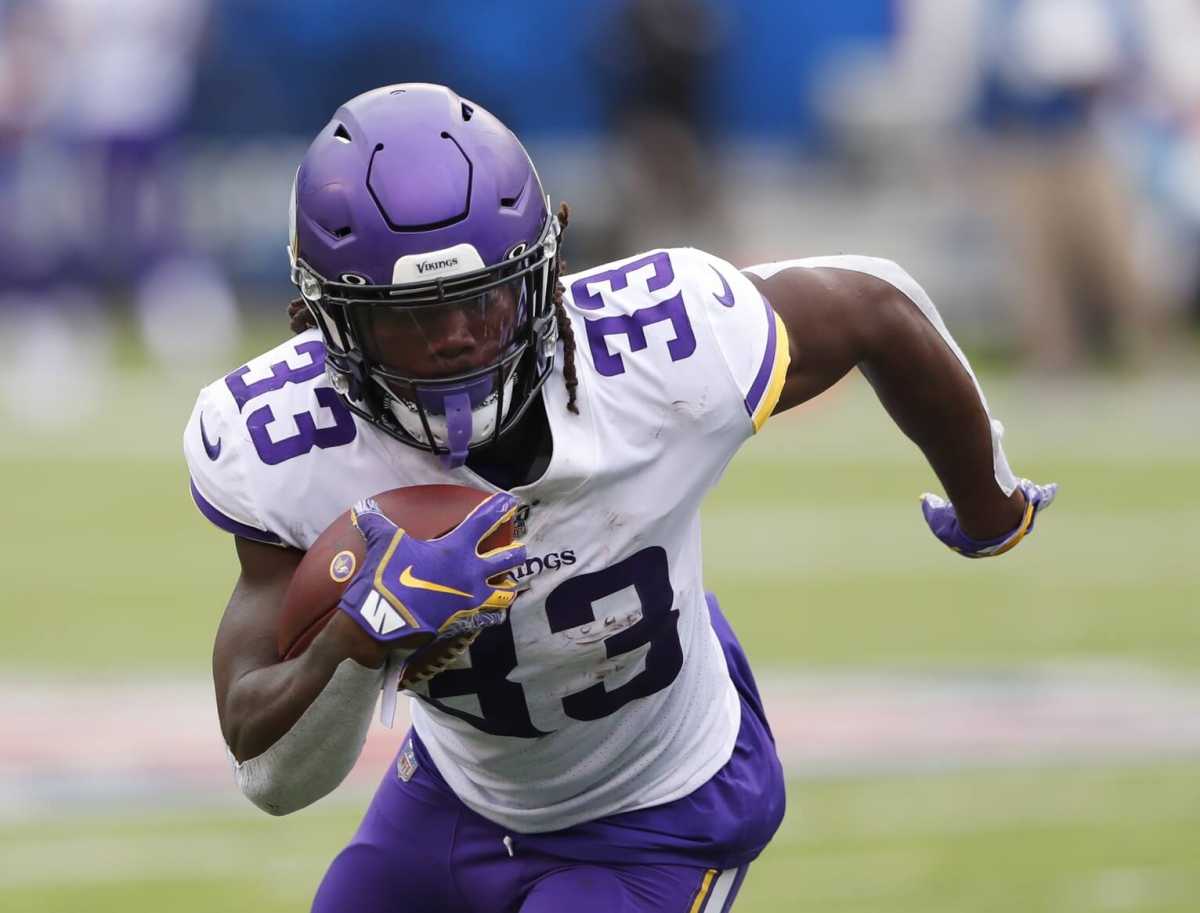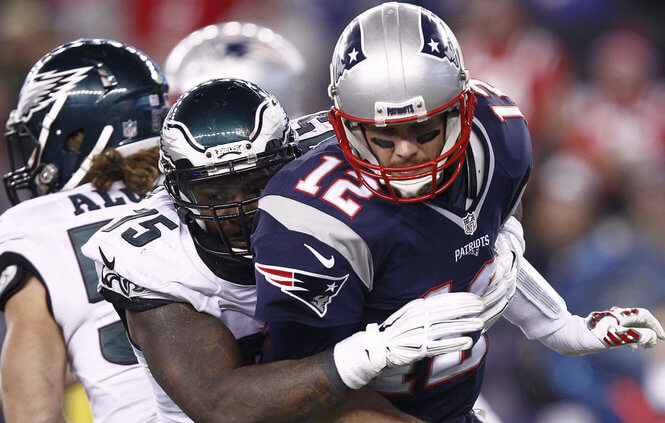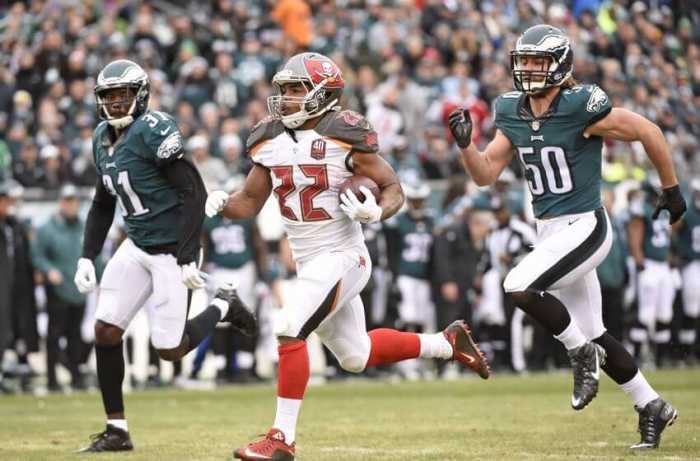Unfortunately, Philly is the 18th ranked run defense when offenses run at the left end, and 21st behind the right tackle. The deficiency on the right side of the defense (left end) can be explained by Barnett’s learning curve.
On the left side, it’s a bit more difficult to explain. Brandon Graham is a hyper-active, athletic defensive end, which makes it difficult for teams to round the edge and get outside of him. Hence the 4th ranked right end placement. Therefore, what opponents often do is stretch him to the boundary and run underneath him. Because the defensive tackles’ job in the defense is to get upfield, that leaves a nice gap that offenses can exploit. It puts all the pressure on the linebackers to step up and fill the gaps. In a zone run scheme, with ample cut back lanes, this can be difficult. Bradham and Brown will have to continue to fly at the ball carrier and Nathan Gerry will have to have the game of his life in run support.
In reality, it is only a matter of time before Dalvin Cook rounds the edge of your defense. There are many solutions to this problem, but the one that requires the least amount of game planning is asking the secondary to define the edge. Orlando Scandrick, Malcolm Jenkins, Sidney Jones, Rasul Douglas and whoever else is lined up outside of the box will have to cut off the outside angle. Moreover, the backside slot corner, or safety will have to squeeze down on the backside edge to limit cutback lanes. In all, the Eagles will have to condense their defense to force Cook up the middle. That puts a lot of pressure on the inside corners in run support, but that is something Jim Schwartz has always stressed in his defenses.
However, it does open the Philadelphia secondary up for play-action pass.
Defending the pass.
When defending the pass, the first order of business will be finding a way to contain Adam Thielen. The Vikings have only thrown for 5 touchdowns, with Thielen being the recipient of 4. Knowing the Eagles’ pass defense is their weakness, Minnesota will try to test the secondary early and often. With Avonte Maddox out of the lineup, it is all up to veteran slot corner Orlando Scandrick. He was a revelation against a weak Jets offense and will need to keep that confidence rolling against one of the best slot receivers in the game.
Over the last few years, the Eagles have struggled to defend play-action pass. Because of their heavy commitment to stop the run, corners are often found looking in the backfield. With the Vikings’ reliance on outside runs, and the aforementioned pressure that puts on the slot corners and strong safety, the Philadelphia secondary will need to remain disciplined — something that’s easier said than done.
However, there is a secondary concern (no pun intended) when facing the Vikings’ passing offense. It’s been mentioned how dangerous Cook can be with the ball in his hands in open space. Minnesota has registered 231 receiving yards on 29/38 passing when targeting their running backs. While that hasn’t been forefront in their offense, the Vikings will have to get the ball out of Kirk Cousin’s hands quickly and one of the ways to do so is using quick passes and screens to the running back. Philadelphia has allowed 257 receiving yards to running backs, 8th most in the NFL. They have also allowed 34 receptions out of the backfield (6th most) on 44 targets (5th).
Much of the Vikings success has been due to a crafty screen game that builds off of play-action. Luckily, the Eagles have one of the savviest defenders in the NFL on their side. Although he’s often matched up with tight ends, with Kyle Rudolph being relatively ineffective so far this season, it would not be surprising to see more of Malcolm Jenkins covering the halfbacks. While Jenkins may not have the sheer athleticism to chase Cook all over the field, he is rarely caught out of position and he is a sure tackler.
When the Vikings do decide to dump the ball off to Dalvin, the key will be tackling. Too often Cook is met by a defender early in the play only to escape for a big gain. This cannot be the case if the Eagles are to find success defensively.
Red zone defense.
Even with all the best-laid intentions, the goal for the Philly defense won’t be to completely shut down Dalvin Cook, but instead to contain him. One of the ways the Eagles can do this is by limiting touchdowns. So far this season, they have been one of the best red zone defenses in the NFL. Although the numbers may not reflect just how special they have been (allowing a TD on 50% of opponent’s red zone possessions), their performance has been nothing short of spectacular. Although they have allowed some easy ones, the defense seems to buckle down when the going gets tough.
The Vikings’ red zone offense has been a mixed bag. Scoring touchdowns on just 60.00% of their red-zone possessions, they capitalized on just 40% of such possessions against the Giants last week. Unfortunately for the Eagles, they have been much better at home, where that number jumps to 85.7%. Three of Dalvin Cook’s touchdowns have been runs from less than 3 yards out. In the extended red zone (10-20 yards), the Vikings offense is susceptible to sputter. Philadelphia will have to limit the Minnesota offense to field goals early in the game.
That’s because one of the most plausible ways of limiting the Vikings run game doesn’t even fall on the defense.
Jumping out to an early lead
Something that has eluded the Eagles all season, jumping out to an early lead in Minnesota will be essential. It forces the ball into Kirk Cousins’ hands, which is something all Eagles fans like to see. Minnesota is 6th in first-half points per game, registering 14.0 per game. If the Eagles can limit those two scores to field goals and score a touchdown of their own, that makes a 14-0 game a much more manageable 7-6 game. Against a very potent rushing attack, Philadelphia cannot afford to get too far behind in the early goings.
Statistics provided by Football Outsiders and Team Rankings.
Mandatory Credit: Noah K. Murray-USA TODAY Sports





























